Joannes Rhino's Blog, page 5
March 23, 2017
Sanur Night Market
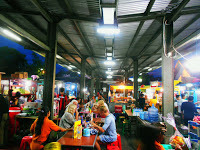 Sanur is Bali's oldest upscale resort area and a mature beach-side town. Despite the abundance of resorts and restaurants around this place, Sanur offers a tranquil and soothing charm. It stretches for about 5 kilometres along an east-facing coastline, with the lush and green landscaped grounds of resorts fronting right on to the sandy beach. The beach is thin and protected by a reef and breakwaters, so families appreciate the limpid waves.
Sanur is Bali's oldest upscale resort area and a mature beach-side town. Despite the abundance of resorts and restaurants around this place, Sanur offers a tranquil and soothing charm. It stretches for about 5 kilometres along an east-facing coastline, with the lush and green landscaped grounds of resorts fronting right on to the sandy beach. The beach is thin and protected by a reef and breakwaters, so families appreciate the limpid waves.To blend with the locals and for the better understanding of how they live, a visit to Sanur Night Market can be included in your itinerary. Located near Sindhu Beach, the market is amongst the cheapest spots that a tourist can find themselves at. Groceries aren’t as overpriced as it is the case with some other spots that have purposely been established to extort the foreign tourists. Sanur Market ideally operates throughout the day with the mornings being dedicated to the selling of groceries, fresh vegetables, dried fish, pungent spices and various household goods. Slightly after midday, departments shift from grocery stalls to food stalls, and the market suddenly transforms itself into a place of sensory delights. So, you are free to go according to your fancies and whims. If you are a food lover and want to have it in the local way, the best time to arrive would be after 6 PM.
Recently, Sanur Night Market underwent some serious sorts of refurbishments and resulting into a much more organized affair, thanks to the more space created. The variety of street food available here is mind-blowing, from local food stalls to meals on wheels. You can find any kind of fried and grilled food, including fried rice, fried noodles, satay, range of curries and stir fries. It becomes so difficult for the first timer to choose what they want to try. The best part, everything is raging under Rp 30,000 per item. So, if you are travelling on a budget, this is definitely the right place to be.
Mounds of food are dumped onto squares of waiting brown paper before being neatly wrapped and handed to salivating takeaway customers. Most of the visitors park their motorbikes and dash in for a takeaway, while the others don’t mind standing in front of the stalls and waiting for the delicacies to be cooked right in front of them. You might not find chairs and tables as per a common seating arrangement, but frankly, who cares! Don’t be surprised to find heaps of foreigners in and around the food stalls and look very excited to try Indonesian food. Worry not about the language barrier as the stallers speak English quite enough to understand what you want to order. In case they don’t, you can still communicate using the language of food by pointing at the items that you want. One secret of the market is for one to understand the balance between the sweetness and the spiciness of the foods.
As you walk and dance around sampling the sweet and spicy intersections wherever they meet, you will be amazed to see live coals in the stalls where meat is charred and grilled to perfection. It is fascinating to watch the chefs cook with their varieties of tossing, flipping, sautéing and sprinkling exquisite Indonesian spices. Some of the food stalls serve plates of ready-to-go food items behind glass, and you can choose what you want to go with rice. Some of the favourites are Perkedel Jagung (corn fritters), Terong Pedas (spicy eggplant), Tempe (soy bean cake), and Balinese style mixed vegetables. You can also find Lawar (coconut and vegetable dish with bits of crunchy pork), Bakso (Indonesian soup with meatballs), different versions of chicken, beef, lamb and fish. Fried pancakes and egg rolls are some of the other foods prepared in different ways.
If you are not sure what to have for dinner, you can go for a Lamb or Chicken Satay with a delicious sweet soy sauce and Lontong (sticky rice), or do try the savoury Martabak, which is a cross between a thin pancake and a thin omelette, stuffed with a slightly spicy filling that usually includes garlic, minced meat, egg and onion. It comes with fresh, birds eye chilies, sweet chili sauce and cucumber slices on the side. For dessert, you could buy a sweet Martabak with a filling of condensed milk, nuts and chocolate. But if you want to go for something light yet yummy, try a fresh tropical fruit salad of papaya, banana and pineapple, or perhaps a Durian Ice Cream. For only under Rp 100,000 you can have all of this. It is a free delicacy.
Sanur Night Market is an amusing break from eating at high-end restaurants. While gorging on street food, you do not compromise anything on taste and quality. But surprisingly, you get to enjoy unimaginable varieties of food at immensely reasonable rates that you actually go high on food. The charm of standing in front of the stalls, ordering over the counter, interacting with the friendly locals who treat you as people rather than ‘Tourists’ and watching your food getting cooked right in front of you is an amazing experience. Away from the posh and luxury, the street food at Sanur Night Market gives you every reason to devour and indulge into true Indonesian food without feeling guilty about emptying your pockets.
This article is also published at NOW! Bali Magazine Bali Online Editor - Bali Writer - Bali Editor - Freelance Indonesia Ghostwriter - Copywriter - Scriptwriter




Published on March 23, 2017 02:00
March 22, 2017
Kuta Street Food
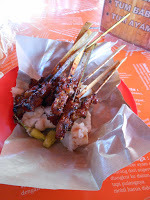 Kuta is a very popular tourist spot. Famous for a lot of posh hotels, resorts and restaurants, the area might seem a little commercialized. However, if you crave to eat an authentic Balinese local food, there’s a place to be considered in the heart of Kuta.
Kuta is a very popular tourist spot. Famous for a lot of posh hotels, resorts and restaurants, the area might seem a little commercialized. However, if you crave to eat an authentic Balinese local food, there’s a place to be considered in the heart of Kuta.Located in Jalan Patih Jelantik, this place acts like a magnet for drawing people who are crazy about pork and want to have it in the rustic, local way. Pork satay under the tree or locally known as “Sate Babi Bawah Pohon”, speaks for itself. The dining spot is in a tent, right under a giant tree in the parking lot of the public sport Gelora Tri Sakti facilities. To reach there, once you are in Legian street, you can ask around and follow the trail of heavenly scent of barbecued meat.
Rp 30,000 is what it takes for you to enjoy 10 sticks of satay complete with Indonesian rice cake called ‘Lontong’ or better known as steamed ketupat rice-cake cubes. You might be searching for peanut sauce or sweet soy sauce to go with the satay, but surprisingly, you will find a pinch of salt with green chilies served on the side. You just need to trust the local chefs, grab one of the skewers and use the succulent barbecued meat on it to crush the chili on top of the salt. If necessary, tap it a bit on the edge of your plate to get rid of the salt before you go for the first bite. The meat is fresh, tender and juicy. It has an amazing crunchy texture on the skin. The taste of the spices and the pork blended together post grilling on charcoal is so tempting and exotic. It is sweet, sharp, a little bit hot and smoky. The mishmash of the sweet and spicy barbecue marinade together with that boost of saltiness and heat from the chili salt just bombs your food pallet in the right places. There is no doubt that you would go in for a second order or even a third, since there is nothing to worry about a dent in your pocket.
This satay opens daily from 10 AM until everything gets sold around noon. It is better to go early in the morning to avoid long queues. For personal note, it is a little difficult to find a table and chair. You might need to stand and enjoy your pork the local way. Do not get fooled by its humble location and eating spot. Sometimes people wait in queues for more than 1 hour just to taste this succulent, yummy pork. Such is the craze and popularity of this dish. It has been loved by all, and labelled Bali’s gourmet bliss!
This article is also published at NOW! Bali Magazine Bali Online Editor - Bali Writer - Bali Editor - Freelance Indonesia Ghostwriter - Copywriter - Scriptwriter




Published on March 22, 2017 05:00
March 20, 2017
Jimbaran Fish Market
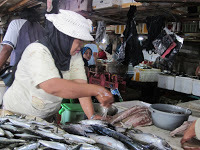 Though many of the popular dishes consists of pork, beef and duck, but fish is something which is a part of the staple diet. Located in Kedonganan village, Jimbaran, Kedonganan Fish Market is a treat for fish lovers. Very popular for its fresh and big catch, this place provides an amazingly long array of fishes to choose from. It is Bali’s main seaside marketplace where fishing boats land daily and haul off their fresh catches, making this place full of fresh catch of unending varieties. Bustling with both tourists and locals, this fish market is one of the hottest culinary destinations in Bali.
Though many of the popular dishes consists of pork, beef and duck, but fish is something which is a part of the staple diet. Located in Kedonganan village, Jimbaran, Kedonganan Fish Market is a treat for fish lovers. Very popular for its fresh and big catch, this place provides an amazingly long array of fishes to choose from. It is Bali’s main seaside marketplace where fishing boats land daily and haul off their fresh catches, making this place full of fresh catch of unending varieties. Bustling with both tourists and locals, this fish market is one of the hottest culinary destinations in Bali.Operate daily from 5 AM until 10 PM, this market is visited by people from every segment. Located close to the coastline, the mornings are usually busy with fishermen hauling their boats and dropping off their fresh catch. The fisherman uses large, motorized boat with huge purse shaped seines. They normally depart late in the afternoon and arrive just before dawn to sell their catch to the wholesalers at the Kedonganan Fish Market. The catch is well iced to maintain its freshness and taste.
To enter this fish market, you need to pay Rp 1,000 for motorcycles and Rp 2,000 for cars. You will find stalls laid cleanly all around with small compartments to categorize the different catch. You can also find few fishermen who lay out their catch on the coast itself and few local vendors who sell fish on the move. The characteristic feature of this traditional market is its semi-permanent shops made from wood. Interestingly, the main concept of this fish market is its proximity to the coasts and umpteen restaurants serving the fresh fish there and then. There is no time spent on transporting the fish to the markets, resulting in extremely fresh and high quality fish being sold.
If you are a seafood lover, be amazed to find varieties of fish like shrimp, squid, crab, lobster, tuna, scallops, crabs, oysters, octopus, and chunks of fish eggs. Amazingly, they all cleaned and neatly arranged. Normally, the fish prices start from Rp 30,000 per kilogram, and more for rarer catches. The prices go up slightly during the rainy season as the catch reduces, as well as during holiday seasons. Bargaining is recommended, and if you are lucky enough you can end up negotiating at some real low price. For your personal note, the fish sellers are pretty warm and friendly. They tend to give a generous discount for anyone buying in bulk.
The ambience is lively, owing to a lot of restaurants and grill houses operating in the vicinity. The place is teeming with tourists more in the evening when they come to choose their catch and take it to a restaurant to get prepared. You can either take your catch home and cook your friends and family a delicious fish supper, or you could even get it cooked on the spot. The restaurants are located along the beaches, providing a beautiful view of the oceans along with mouth-watering dishes to enjoy. These restaurants are operational from breakfast time until the wee hours of the morning. These local restaurants have a rustic air about them and are the perfect place to taste authentic Balinese food cooked in the most customary way. A lot of restaurants even allow you to take your catch to the chef and request them to prepare it for you. Of course, you do have to pay a little extra for this. The best part is that if you want to throw a beach party, you can simply request the chef to cook your choice of fish in your way and have a fun evening with a unique fish dining experience. Kedonganan fish market offers such flavoursome and scrumptious rendezvous.
This article is also published at NOW! Bali Magazine Bali Online Editor - Bali Writer - Bali Editor - Freelance Indonesia Ghostwriter - Copywriter - Scriptwriter




Published on March 20, 2017 21:00
March 19, 2017
Denpasar Traditional Market
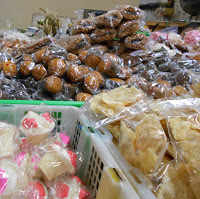 Denpasar’s charm lies in the marvellous way in which it retains such a strong hold on its cultural heritage and the ethnicities of the Balinese people, flawlessly combining the new with the old. For those who yearn to explore and have an insatiable thirst to deep-dive and learn new culture, a visit to Denpasar traditional market is the perfect doorway to authentic Indonesian lifestyle.
Denpasar’s charm lies in the marvellous way in which it retains such a strong hold on its cultural heritage and the ethnicities of the Balinese people, flawlessly combining the new with the old. For those who yearn to explore and have an insatiable thirst to deep-dive and learn new culture, a visit to Denpasar traditional market is the perfect doorway to authentic Indonesian lifestyle.Badung Traditional Market in Denpasar strongly depicts Balinese culture and traditions by beautifully encapsulating Balinese lifestyle in all its shops. This market invites you with street carts, busy food stalls and people selling snacks right off the back of their motorbikes. Exotic and enticing in its own way, the market atmosphere draws in locals by the hundreds, ready to examine through a stockpile of market goods for a fraction of their retail price.
Currently relocated to Jalan Cokroaminoto after a major fire incident, Badung Traditional Market is the centre of town's economics. Despite being a little dull from the outside, this complex remains a strong driving force for the Balinese economy with transactions and sales happening around the clock. The local people who go for shopping at this market are not only from environment of Denpasar community but also from other places. Badung Traditional Market is operating for 24 hours, divided by 2 shifts start at 5 in the morning and 5 in the evening.
This enormous shopping place consists of a large main building that houses stalls and shops of all varieties, including hardware, slow-moving items and daily necessities from clothing, home ware, kitchen utensils and ceremonial goods such as ornamental baskets and incense. It offers a perfect picture of Balinese tools and items that the locals use almost every day. Some have fixed prices, while others can be well negotiated. Outside the building is the 24-hour-open-air market counterpart, where fast-moving items and groceries are sold. You can feast your eyes on colourful tropical fruits and bargain hard. This market becomes quite cramped up before big holidays like Galungan, Kuningan, or Nyepi.
The highlight of Badung Traditional Market is its authentic street food and Balinese style light bites. From the very humble stalls on the side walk to the food stalls on wheels and motorbikes with a gas cooker, the locals have found many diverse ways to serve warm and fresh food that seems to be delivered straight from the street. Most of the food stallers have their own ‘kitchen’ that they can build flexibly next to the diners who sit on plastic stools at makeshift tables.
You will instantly feel the aroma of Balinese spices engulfing you. Lovely satay skewers with rice cakes are charcoaled to the point where the sugars from the marinade caramelizes and gives the perfect crunch. Tipat is a rice cake cooked in woven coconut leaves, a simple stodge filler, served in a thick sweet peanut sauce. Wash it down with Es Kelapa Muda, which is coconut water and flesh on ice. If you really like spicy food, you will love sate lilit (minced meat, grated coconut, coconut milk, lemon juice, shallots and chili pepper), combo wound around a bamboo, sugar cane or lemongrass stick, and grilled on charcoal or even the Sambal Matah (a chili salsa condiment that you put over grilled fish, chicken or rice). The suckling pig is definitely a must try. It is a unique dish roasted on whole over fire, stuffed with onions, garlic, ginger, galangal, turmeric, lemongrass, shallots and chilies. A very common dish that you will find in most of small food stalls is different types of Lawar, like Pork, Jackfruit and Dragonfly Lawar, which is a mix of vegetables, coconut and minced meat drowned in rich herbs and spices. Nasi Campur is Bali’s signature dish but when you order it from local eateries, the chili they put on the side or on top is ridiculously spicy, which gives you the kick of real street food.
The street food in Badung Traditional Market attracts thousands of locals and tourists every day. Simple dishes with complex flavourings is what makes these food items so irresistible, living up to the true definition of street food.
This article is also published at NOW! Bali Magazine Bali Online Editor - Bali Writer - Bali Editor - Freelance Indonesia Ghostwriter - Copywriter - Scriptwriter




Published on March 19, 2017 18:30
March 18, 2017
Dhatri’s Crystal Healing Chakra Balancing & Spiritual Massage
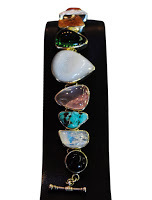 Chakra Healing through Chakra Balancing Spiritual Massage is a process that has been divided into sessions that makes maximum utilization of natural resonance of crystals in a process that revitalizes ones’ circulation into a healthy one thus rehabilitating your vital force. This is done through the chakras, which essentially are the seven energy centres running along your spine’s length, beginning from the tailbone all the way to the crown. These centres, referred to as spiritual organs in the eastern medicine, each of these chakras have been associated with that varying attitudes as well as emotions that we do experience in our lives. Our bodies indeed communicate to us clearly and specifically, if we are willing to listen.
Chakra Healing through Chakra Balancing Spiritual Massage is a process that has been divided into sessions that makes maximum utilization of natural resonance of crystals in a process that revitalizes ones’ circulation into a healthy one thus rehabilitating your vital force. This is done through the chakras, which essentially are the seven energy centres running along your spine’s length, beginning from the tailbone all the way to the crown. These centres, referred to as spiritual organs in the eastern medicine, each of these chakras have been associated with that varying attitudes as well as emotions that we do experience in our lives. Our bodies indeed communicate to us clearly and specifically, if we are willing to listen.Dhatri Healing Centre is today widely acclaimed name as far as Crystal Healing of the Chakras is concerned. Their well-elaborate healing steps guarantee proper healing after one undergo the entire procedure. Divided into four steps, Dhatri starts with elaborate diagnosis before they can give a Midas touch to your health.
1st step: The Chakra Diagnosis by Aura CameraIf you don’t know where you are going to, you will absolutely end nowhere. This is an important saying when it comes to chakra as well. It is mandatory that you get proper diagnosis before you can receive the appropriate consultation and treatment. With the use of the state-of-the-art Aura cameras, Dhatri has specialists who will be able to help you see your aura condition and energy status. From this, you will get the professional report that enables you to deeply know yourself. It is synchronised with Buddha said, “To keep the body in good health is a duty, otherwise we shall not be able to keep our mind strong and clear.”
2nd step: Chakra BalancingThis is done using handmade Tibetan singing bowls that comes with seven different sounds, each sound for each chakra. It is incredible knowing that your chakras get balanced through a special Chrystal formula done on you as you lie in the healing bed. The energy sounds of these singing bowl ensures your chakras reach perfect harmony through balancing.
3rd step: The Relaxing Full Body MassageA full-body-massage follows, thus guaranteeing you relaxation of body muscles and mind. This uses acupressure techniques among other eastern natural healing methods that have been proven to be very effective. Through the ultimate combination of Chrystal massages such as the Chrystal meridian massage, crystal foot reflexology and crystal head & face massages, you will indeed feel therapeutic effects in your entire system.
4th step — final chakra balancingThrough the combination of special crystal healing procedures, or rather crystal double terminator diamond special procedures, you get out of Dhatri a completely different person from the way you got in. A combination of pain reduction, relaxation, improved body circulation, cellular rejuvenation through reflexology, head & face massage together with crystal healing massage, you get the most perfect Chakra balancing ever.
Courtesy of Dhatri Jewellery and Crystal Healing Studio This article is also published at NOW! Bali Magazine Bali Online Editor - Bali Writer - Bali Editor - Freelance Indonesia Ghostwriter - Copywriter - Scriptwriter




Published on March 18, 2017 23:00
March 17, 2017
Empowering remote village with education and life skills
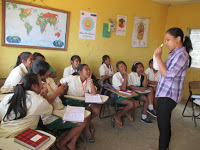 Established in 1998, East Bali Poverty Project (EBPP) is a non-profit organization with focus on the mountain villages people in the east side on Bali. Village Ban is one of their ongoing projects. It is the most remote and disadvantage village in Bali, located on the steep and dry eastern slopes of Mount Agung and Mount Abang. To reach there requires some efforts. On the road to Besakih Temple, take a left turn to penetrate the protected forests of Mount Agung, negotiating narrow and winding sandy tracks, just enough for one sturdy car. It is actually not a road but the flow path of the water when it rains, which is used by the residents around the forest to get grass for feeding their cows. The village of Ban is located right after the protected forest.
Established in 1998, East Bali Poverty Project (EBPP) is a non-profit organization with focus on the mountain villages people in the east side on Bali. Village Ban is one of their ongoing projects. It is the most remote and disadvantage village in Bali, located on the steep and dry eastern slopes of Mount Agung and Mount Abang. To reach there requires some efforts. On the road to Besakih Temple, take a left turn to penetrate the protected forests of Mount Agung, negotiating narrow and winding sandy tracks, just enough for one sturdy car. It is actually not a road but the flow path of the water when it rains, which is used by the residents around the forest to get grass for feeding their cows. The village of Ban is located right after the protected forest.When the EBPP started in 1998 after request by the village for help, basic facilities were not available in this part of the island. No road, electricity, water supply, and not even phone signal. As for the natural source, they don’t have river or paddy field. Rain water is the only major source of water they can rely on. There is a dirt road that cut across the village, but that is actually a valley between Mount Agung and Mount Abang. This access comprised sandy and rocky slopes that get flash flood when it rains or when rain occurs only at the Mount Agung slope. If that happens, people of Ban could not get out of their hamlets until the water receded.
Deeper on the dirt road to the other end side of the village, there is Jatituhu, one of the hamlets in Ban village. More than 100 families live here in a housing compound with only approximately 10 to 15 houses close to each other in a central area. The houses are small and made from bamboo bedeg. Children ran around with no clothes and bare food.
It is hard to believe that it was already 18 years ago. But not much change in the lives of the Jatituhu people at the present day, except now they have electricity, better road, water reservoir, toilets, more active Posyandu and education for their children. The last four are the EBPP programmes with Iodine Deficiency Disorder (IDD) elimination as our first programme in 2001 as the goitre rate reached 84.5%.
In Jatituhu, EBPP made their contribution to build up basic facilities such as water reservoir, health facilities and toilets. In 2005, they started the children education programme in Jatituhu after starting the others 4 education programmes in the others 4 hamlets in Ban villages. The closest elementary school for Jatituhu is located in Temakung hamlet within 5 kilometres with access footpath. At that time most of the children of school age do not attend school. The distance to the junior high school around 15 kilometres.
Since the launch of their first hamlet school in Bunga on 1999, EBPP now manages 6 remote schools in the hamlets of Bunga (1999), Cegi (2000), Pengalusan (2000), Manikaji (2001), Jatituhu (2005) and Darmaji (2007). They manage programme for Elementary, Junior High and Senior High School level in these 6 hamlets of Village Ban. Up to this day, EBPP has been educated more than 1,000 children in their 6 schools.
These children are not only studying the national mandatory subjects in the class, but they are also integrated life skills they need to empower them for a better future. The main subjects of the study in the elementary level are including health, hygiene, sanitation, art, music and Balinese dance. For junior and senior high school students, they are also learning nutrition, reproductive health, computer & financial literacy, job applications & life skills. Bamboo handicraft skill is a mandatory study in EBPP programme. With their latest programme, EPBB aims to empower the students to create own bamboo business so they don’t have to leave their village to find a job. Their future is in their own village.
At the moment, EBPP is struggling with the limited fund to continue these education programmes. They need funding to continue the primary and secondary school education in these remote hamlets. Having a proper level of education will them access to a better future. “Help us to help them help themselves.”
Courtesy of East Bali Poverty ProjectThis article is also published at NOW! Bali Magazine Bali Online Editor - Bali Writer - Bali Editor - Freelance Indonesia Ghostwriter - Copywriter - Scriptwriter




Published on March 17, 2017 21:00
March 14, 2017
Sea Salt Bath with Ayana Resort & Spa
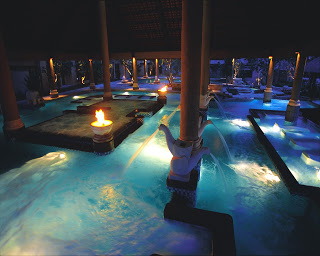 "It is nice finding that place where you can just go and relax.” One of the signature body relaxation procedures in Ayana Resort & Spa is the Aquatonic Seawater Therapy that is done in the Aquatonic Seawater Therapy Pool. In the procedure, warm salty water is filled in the pool, and upon dipping yourself inside this pool, a healing process that calms the system and invigorates the bather begins.
"It is nice finding that place where you can just go and relax.” One of the signature body relaxation procedures in Ayana Resort & Spa is the Aquatonic Seawater Therapy that is done in the Aquatonic Seawater Therapy Pool. In the procedure, warm salty water is filled in the pool, and upon dipping yourself inside this pool, a healing process that calms the system and invigorates the bather begins. At Ayana Resort, you have the best opportunity of doing warm sea salt bath in an almost natural state.The pool is a marvellous composition of a labyrinth of specific bubble baths, shower jets, counter current walking zones, water massage zones together with currents & counter currents, all of which offer treatment to different parts of the body via differing positioning and intensity. This offers beneficial effects that tones the muscles and enhances better blood circulation.
The Aquatonic pool has a capacity of 700,000,000 litres of water that is directly supplied to this pool from the Indian Ocean that’s underlying Ayana. This rebalances mineral deficiencies all the time. With the floating effects of the pool, one is able to exercise their way through twelve hydro massage positions containing more than 60 therapeutic jet streams, geysers and micro-bubbles for the rehabilitation of the injured muscles as well as for stress relief.
Not only will the pool be effective in making you relax your mind and muscles, but there is much more. Psoriasis, eczema, muscular and back pain, cardiovascular functioning, diabetes and improved immune system are all things that will greatly be dealt with, all these done while you are in a relaxation mode. Stress & tension, improved metabolism, cellulite reduction muscle toning, skin relaxation and toning, anti-ageing therapies and improved quality of sleep are all results that one gets upon taking bath in this pool.
The best time to get into the pool is always at sunset, just before you go for your early night. Be sure of getting a deep dreamless slumber. It is also recommended you take your bath just before or after a flight to or from a different time zone so as to combat the jetlag effects. Doing it after an exercise or before a manual massage is great for enhancement of the lymphatic drainage.
With all these benefits and options, it will be more therapeutic and interesting for you to balance the relaxing tranquillity in these incredible healing waters of Bali.
Courtesy of Ayana Resort & Spa This article is also published at NOW! Bali Magazine Bali Online Editor - Bali Writer - Bali Editor - Freelance Indonesia Ghostwriter - Copywriter - Scriptwriter




Published on March 14, 2017 20:02
March 13, 2017
OPIA Jimbaran
 Having just opened its doors to the public last December, OPIA has emerged as the ultimate Bali dining destination in Jimbaran area. The restaurant offers a killer view of Jimbaran’s natural beauty which acts as the cornerstone of setting the stage for your culinary experience. Be ready to come in touch with the refined Asian-inspired cuisine that has carefully been developed from the local sea and land products, thanks to the expertise of Executive Chef Nicolas Lazzaroni who previously was the brain of Bridges Bali. Highlighting the natural temptation of the venue, you are expected to enjoy a contrast of flavours, textures and colours with dishes being plated by the modern nature theme. In the bar, OPIA serves a world class of molecular cocktails together with a wide range of champagne and wine. Imagine the kind of an afternoon that you can have at OPIA Jimbaran! Let the elements of interception between you and the concept of natural dining be invoked in you upon visiting this great dining destination. The restaurant also has workshop programs to teach those willing to learn how to cook. The master OIPA chefs will ensure you come out of the place after you have mastered the art of preparing delicacies of the local and international cuisines.
Having just opened its doors to the public last December, OPIA has emerged as the ultimate Bali dining destination in Jimbaran area. The restaurant offers a killer view of Jimbaran’s natural beauty which acts as the cornerstone of setting the stage for your culinary experience. Be ready to come in touch with the refined Asian-inspired cuisine that has carefully been developed from the local sea and land products, thanks to the expertise of Executive Chef Nicolas Lazzaroni who previously was the brain of Bridges Bali. Highlighting the natural temptation of the venue, you are expected to enjoy a contrast of flavours, textures and colours with dishes being plated by the modern nature theme. In the bar, OPIA serves a world class of molecular cocktails together with a wide range of champagne and wine. Imagine the kind of an afternoon that you can have at OPIA Jimbaran! Let the elements of interception between you and the concept of natural dining be invoked in you upon visiting this great dining destination. The restaurant also has workshop programs to teach those willing to learn how to cook. The master OIPA chefs will ensure you come out of the place after you have mastered the art of preparing delicacies of the local and international cuisines.Courtesy of opia bali
This article is also published at NOW! Bali Magazine Bali Online Editor - Bali Writer - Bali Editor - Freelance Indonesia Ghostwriter - Copywriter - Scriptwriter




Published on March 13, 2017 19:59
March 2, 2017
First-hand experience of the positivity and meaningful work
After the tragic death of Annika Linden in 2002 Bali bombing, the Annika Linden Foundation was formed to create something positive out of this terrible tragedy. In the following nine years, the Annika Linden Foundation funded 36 projects across Bali, Thailand, and India; working alongside small non-profits addressing issues affecting some of society’s most marginalized groups. In 2012, after 10 years of memorial to Annika’s life, the Annika Linden Foundation became the Inspirasia Foundation and followed by the establishment of Annika Linden Centre.
Build on the foundation of Inspirasia Foundation decade grant making experience to grassroots non-profits across Asia, the Annika Linden Centre located in Tohpati, opened in 2013 as a world-class facility and purpose-built centre of excellence for social change. It is home of the first-of-its-kind incubator for Impact service delivers tailor-made, impact-focused mentorship and training to high potential on-the-ground social sector leaders, NGOs and social entrepreneurship to further social change.
Today, Annika Linden Centre incubator for impact houses 4 outstanding non-profits - PUSPADI Bali, YPK Bali, DNetwork, and East Bali Poverty Project – Health and Nutrition centre, and support 5 more non-profits throughout Indonesia. It has an average of 1,170 visit per month during 2016 and has delivered numerous hours of training and capacity building to the local non-profits. The foundation main focus is creating lasting social change.
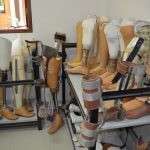 Puspadi Bali, a leader in prosthetic provision for physically disabled, is operating out of a state of the art, professionally designed prosthetic workshop. Puspadi Bali employed certified Prosthetics and has more than 20 dedicated staff with 75% of them having physical disability. Puspadi Bali is well recognized in making the highest quality prosthetic outside Jakarta.
Puspadi Bali, a leader in prosthetic provision for physically disabled, is operating out of a state of the art, professionally designed prosthetic workshop. Puspadi Bali employed certified Prosthetics and has more than 20 dedicated staff with 75% of them having physical disability. Puspadi Bali is well recognized in making the highest quality prosthetic outside Jakarta.
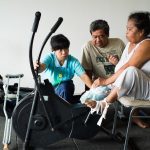 YPK Bali, offering education and physical therapy to its disabled clients, designed its own gym facilities for physical therapy and classroom for informal education, so it can truly meet every one of their needs. YPK staffs are professional Physiotherapist and trained educators for special needs children. YPK is well recognize as a professional non-profit in physiotherapy and special needs education.
YPK Bali, offering education and physical therapy to its disabled clients, designed its own gym facilities for physical therapy and classroom for informal education, so it can truly meet every one of their needs. YPK staffs are professional Physiotherapist and trained educators for special needs children. YPK is well recognize as a professional non-profit in physiotherapy and special needs education.
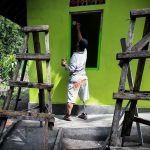 DNetwork, a global jobs network connecting employers with job seekers with disability. Since 2014, it has been helping more than 400 job seekers in Indonesia and successfully placed more than 42 people with disability through DNetwork.net. DNetwork team have been passionately creating connection between each disabled job seeker with company in creating inclusiveness in the working environment.
DNetwork, a global jobs network connecting employers with job seekers with disability. Since 2014, it has been helping more than 400 job seekers in Indonesia and successfully placed more than 42 people with disability through DNetwork.net. DNetwork team have been passionately creating connection between each disabled job seeker with company in creating inclusiveness in the working environment.
One of their milestones this year is by successfully organizing an NGO fair on August 14, 2016, where 23 NGOs and social enterprises showcased their product and services. The fair attracted more than 500 people just in one day, and about 460 of them received multiple services including free eye and reproductive health check-ups as well as physiotherapy, nutrition, and mobility aids consultation. In the future, the Annika Linden Centre plans to provide non-financial support whist being a catalyst for more collaboration with different entities, including non-profits, business, social entrepreneurs and expert, to bring excellence to the sector and greater social impact.
It is understandable that the donors want more information and more complete picture of option for their donation. Donors want to learn from someone on the ground who is familiar with the non-profit landscape, and also from each other’s funding experiences. It is a question of collecting that information and ensuring that it is easily available. They believe that when non-profit leaders coordinate and connect, donors understand the value of that, and it increases the impact of their donation. It makes outcomes better for the families that take services from the non-profits, and the conversations that follow generate ideas for improving the programs.
The Inspirasia Foundation and Annika Linden Centre would not have been able to do all the work they have been doing and support all of these outstanding non-profits without the supports of the stakeholders. By connecting with them, they can create bigger changes and have a larger impact, through their channel and models of evaluating and monitoring impact from every dollar of your contributions. For them, it is always about more than money, that invest on cash grants alongside training and expert support to use that hard earned cash for maximum impact and maximum inspiration. It is with this spirit that they are inviting you and your organization to join us in making a difference in giving, and to inspire others to give more, and give well.
Courtesy of Annika Linden Centre This article is also published at NOW! Bali Magazine Bali Online Editor - Bali Writer - Bali Editor - Freelance Indonesia Ghostwriter - Copywriter - Scriptwriter




Build on the foundation of Inspirasia Foundation decade grant making experience to grassroots non-profits across Asia, the Annika Linden Centre located in Tohpati, opened in 2013 as a world-class facility and purpose-built centre of excellence for social change. It is home of the first-of-its-kind incubator for Impact service delivers tailor-made, impact-focused mentorship and training to high potential on-the-ground social sector leaders, NGOs and social entrepreneurship to further social change.
Today, Annika Linden Centre incubator for impact houses 4 outstanding non-profits - PUSPADI Bali, YPK Bali, DNetwork, and East Bali Poverty Project – Health and Nutrition centre, and support 5 more non-profits throughout Indonesia. It has an average of 1,170 visit per month during 2016 and has delivered numerous hours of training and capacity building to the local non-profits. The foundation main focus is creating lasting social change.
 Puspadi Bali, a leader in prosthetic provision for physically disabled, is operating out of a state of the art, professionally designed prosthetic workshop. Puspadi Bali employed certified Prosthetics and has more than 20 dedicated staff with 75% of them having physical disability. Puspadi Bali is well recognized in making the highest quality prosthetic outside Jakarta.
Puspadi Bali, a leader in prosthetic provision for physically disabled, is operating out of a state of the art, professionally designed prosthetic workshop. Puspadi Bali employed certified Prosthetics and has more than 20 dedicated staff with 75% of them having physical disability. Puspadi Bali is well recognized in making the highest quality prosthetic outside Jakarta. YPK Bali, offering education and physical therapy to its disabled clients, designed its own gym facilities for physical therapy and classroom for informal education, so it can truly meet every one of their needs. YPK staffs are professional Physiotherapist and trained educators for special needs children. YPK is well recognize as a professional non-profit in physiotherapy and special needs education.
YPK Bali, offering education and physical therapy to its disabled clients, designed its own gym facilities for physical therapy and classroom for informal education, so it can truly meet every one of their needs. YPK staffs are professional Physiotherapist and trained educators for special needs children. YPK is well recognize as a professional non-profit in physiotherapy and special needs education. DNetwork, a global jobs network connecting employers with job seekers with disability. Since 2014, it has been helping more than 400 job seekers in Indonesia and successfully placed more than 42 people with disability through DNetwork.net. DNetwork team have been passionately creating connection between each disabled job seeker with company in creating inclusiveness in the working environment.
DNetwork, a global jobs network connecting employers with job seekers with disability. Since 2014, it has been helping more than 400 job seekers in Indonesia and successfully placed more than 42 people with disability through DNetwork.net. DNetwork team have been passionately creating connection between each disabled job seeker with company in creating inclusiveness in the working environment.One of their milestones this year is by successfully organizing an NGO fair on August 14, 2016, where 23 NGOs and social enterprises showcased their product and services. The fair attracted more than 500 people just in one day, and about 460 of them received multiple services including free eye and reproductive health check-ups as well as physiotherapy, nutrition, and mobility aids consultation. In the future, the Annika Linden Centre plans to provide non-financial support whist being a catalyst for more collaboration with different entities, including non-profits, business, social entrepreneurs and expert, to bring excellence to the sector and greater social impact.
It is understandable that the donors want more information and more complete picture of option for their donation. Donors want to learn from someone on the ground who is familiar with the non-profit landscape, and also from each other’s funding experiences. It is a question of collecting that information and ensuring that it is easily available. They believe that when non-profit leaders coordinate and connect, donors understand the value of that, and it increases the impact of their donation. It makes outcomes better for the families that take services from the non-profits, and the conversations that follow generate ideas for improving the programs.
The Inspirasia Foundation and Annika Linden Centre would not have been able to do all the work they have been doing and support all of these outstanding non-profits without the supports of the stakeholders. By connecting with them, they can create bigger changes and have a larger impact, through their channel and models of evaluating and monitoring impact from every dollar of your contributions. For them, it is always about more than money, that invest on cash grants alongside training and expert support to use that hard earned cash for maximum impact and maximum inspiration. It is with this spirit that they are inviting you and your organization to join us in making a difference in giving, and to inspire others to give more, and give well.
Courtesy of Annika Linden Centre This article is also published at NOW! Bali Magazine Bali Online Editor - Bali Writer - Bali Editor - Freelance Indonesia Ghostwriter - Copywriter - Scriptwriter




Published on March 02, 2017 10:34
March 1, 2017
Take Your Coming Vacation to Nairobi, Kenya
Derived from a native community (Maasai) language “Enkanye Nyorobi,” Nairobi means a place of cool waters. True to its name, the city indeed a cool place. With a cool set up, there are numerous places where someone can visit during holidays in this city. Be sure to enjoy the local cuisine in some of the best restaurants in the region. In terms of accommodation, guesthouses are all over, with different hotels offering bed spaces for visitors.
 Nairobi national park is one of the destinations that everyone must stop at. Many wild animals in this park that have been left to naturally interact with nature. You can expect to be face to face with lions, zebras, antelopes, baboons, monkeys among other animals at the park. There are a number of formidable tour guide companies that will always be ready to take you round.
Nairobi national park is one of the destinations that everyone must stop at. Many wild animals in this park that have been left to naturally interact with nature. You can expect to be face to face with lions, zebras, antelopes, baboons, monkeys among other animals at the park. There are a number of formidable tour guide companies that will always be ready to take you round.
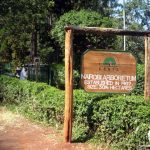 The Nairobi arboretum is yet another place worth paying a visit. If you are a naturalist, this stop is a must. The arboretum is preserving thousands of plant species. This is therefore where you can learn some of the plants you know physically but can’t match them with their names. The cool breeze and calm environment within the arboretum makes it a great place to spend a picnic.
The Nairobi arboretum is yet another place worth paying a visit. If you are a naturalist, this stop is a must. The arboretum is preserving thousands of plant species. This is therefore where you can learn some of the plants you know physically but can’t match them with their names. The cool breeze and calm environment within the arboretum makes it a great place to spend a picnic.
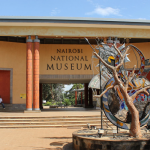 If you want to know more about the history of Kenya, then The Nairobi National Museum should be your next stop. The national museum offers education and leisure tourists an opportunity to learn the rich heritage of Kenya. Opened all days of the year, let your visit not be complete without you making a stop at this site that is located on the western sides of Nairobi referred to as Westlands. The museum houses celebrated collections of Kenya’s contemporary Art, nature, culture as well as history.
If you want to know more about the history of Kenya, then The Nairobi National Museum should be your next stop. The national museum offers education and leisure tourists an opportunity to learn the rich heritage of Kenya. Opened all days of the year, let your visit not be complete without you making a stop at this site that is located on the western sides of Nairobi referred to as Westlands. The museum houses celebrated collections of Kenya’s contemporary Art, nature, culture as well as history.
 Next to Nairobi, you can find the Maasai Mara Game Reserve. A visit to this game reserve would be very prudent indeed. The Maasai Mara Game Reserve is one of the few homes of all the big five animals, namely the African elephant, Cape buffalo, Rhino, African leopard and African Lion. This is just a tip of an iceberg as there are other hundreds and hundreds of species. Almost any animal that can be found in Africa will be found at the Mara. If you visit in July, you will be able to appreciate the great Wildebeest Migration from Serengeti in Tanzania to the Maasai Mara. In October, the Wildebeests migrate back to Serengeti. This is one of the great wonders of the world worth witnessing.
Next to Nairobi, you can find the Maasai Mara Game Reserve. A visit to this game reserve would be very prudent indeed. The Maasai Mara Game Reserve is one of the few homes of all the big five animals, namely the African elephant, Cape buffalo, Rhino, African leopard and African Lion. This is just a tip of an iceberg as there are other hundreds and hundreds of species. Almost any animal that can be found in Africa will be found at the Mara. If you visit in July, you will be able to appreciate the great Wildebeest Migration from Serengeti in Tanzania to the Maasai Mara. In October, the Wildebeests migrate back to Serengeti. This is one of the great wonders of the world worth witnessing.
In Upper and Lower Hill regions of Nairobi are the spot where you can discover high rated hotels. These hotels have different ratings, hence different costs of accommodation to suit your pockets and class. Most of these guest houses have swimming pools, gyms for recreation, physical fitness, spas for body massage and general body wellness. Notwithstanding, there are other good hotels and guest rooms scattered all over the city.
 And there is no Safari that can be complete without good food being served. In Nairobi, you have the opportunity of enjoying the Kenyan cuisine at its bests. Native vegetables, traditionally prepared are worth your taste. There is also the Ugali, a corn flour product that is the staple food of Kenya. Ugali can be served with any stew, mainly for lunch or dinner. Other foods include fish, beef, Irish potatoes and beans are prepared in different ways.
And there is no Safari that can be complete without good food being served. In Nairobi, you have the opportunity of enjoying the Kenyan cuisine at its bests. Native vegetables, traditionally prepared are worth your taste. There is also the Ugali, a corn flour product that is the staple food of Kenya. Ugali can be served with any stew, mainly for lunch or dinner. Other foods include fish, beef, Irish potatoes and beans are prepared in different ways.
Bali Online Editor - Bali Writer - Bali Editor - Freelance Indonesia Ghostwriter - Copywriter - Scriptwriter




 Nairobi national park is one of the destinations that everyone must stop at. Many wild animals in this park that have been left to naturally interact with nature. You can expect to be face to face with lions, zebras, antelopes, baboons, monkeys among other animals at the park. There are a number of formidable tour guide companies that will always be ready to take you round.
Nairobi national park is one of the destinations that everyone must stop at. Many wild animals in this park that have been left to naturally interact with nature. You can expect to be face to face with lions, zebras, antelopes, baboons, monkeys among other animals at the park. There are a number of formidable tour guide companies that will always be ready to take you round. The Nairobi arboretum is yet another place worth paying a visit. If you are a naturalist, this stop is a must. The arboretum is preserving thousands of plant species. This is therefore where you can learn some of the plants you know physically but can’t match them with their names. The cool breeze and calm environment within the arboretum makes it a great place to spend a picnic.
The Nairobi arboretum is yet another place worth paying a visit. If you are a naturalist, this stop is a must. The arboretum is preserving thousands of plant species. This is therefore where you can learn some of the plants you know physically but can’t match them with their names. The cool breeze and calm environment within the arboretum makes it a great place to spend a picnic. If you want to know more about the history of Kenya, then The Nairobi National Museum should be your next stop. The national museum offers education and leisure tourists an opportunity to learn the rich heritage of Kenya. Opened all days of the year, let your visit not be complete without you making a stop at this site that is located on the western sides of Nairobi referred to as Westlands. The museum houses celebrated collections of Kenya’s contemporary Art, nature, culture as well as history.
If you want to know more about the history of Kenya, then The Nairobi National Museum should be your next stop. The national museum offers education and leisure tourists an opportunity to learn the rich heritage of Kenya. Opened all days of the year, let your visit not be complete without you making a stop at this site that is located on the western sides of Nairobi referred to as Westlands. The museum houses celebrated collections of Kenya’s contemporary Art, nature, culture as well as history. Next to Nairobi, you can find the Maasai Mara Game Reserve. A visit to this game reserve would be very prudent indeed. The Maasai Mara Game Reserve is one of the few homes of all the big five animals, namely the African elephant, Cape buffalo, Rhino, African leopard and African Lion. This is just a tip of an iceberg as there are other hundreds and hundreds of species. Almost any animal that can be found in Africa will be found at the Mara. If you visit in July, you will be able to appreciate the great Wildebeest Migration from Serengeti in Tanzania to the Maasai Mara. In October, the Wildebeests migrate back to Serengeti. This is one of the great wonders of the world worth witnessing.
Next to Nairobi, you can find the Maasai Mara Game Reserve. A visit to this game reserve would be very prudent indeed. The Maasai Mara Game Reserve is one of the few homes of all the big five animals, namely the African elephant, Cape buffalo, Rhino, African leopard and African Lion. This is just a tip of an iceberg as there are other hundreds and hundreds of species. Almost any animal that can be found in Africa will be found at the Mara. If you visit in July, you will be able to appreciate the great Wildebeest Migration from Serengeti in Tanzania to the Maasai Mara. In October, the Wildebeests migrate back to Serengeti. This is one of the great wonders of the world worth witnessing.In Upper and Lower Hill regions of Nairobi are the spot where you can discover high rated hotels. These hotels have different ratings, hence different costs of accommodation to suit your pockets and class. Most of these guest houses have swimming pools, gyms for recreation, physical fitness, spas for body massage and general body wellness. Notwithstanding, there are other good hotels and guest rooms scattered all over the city.
 And there is no Safari that can be complete without good food being served. In Nairobi, you have the opportunity of enjoying the Kenyan cuisine at its bests. Native vegetables, traditionally prepared are worth your taste. There is also the Ugali, a corn flour product that is the staple food of Kenya. Ugali can be served with any stew, mainly for lunch or dinner. Other foods include fish, beef, Irish potatoes and beans are prepared in different ways.
And there is no Safari that can be complete without good food being served. In Nairobi, you have the opportunity of enjoying the Kenyan cuisine at its bests. Native vegetables, traditionally prepared are worth your taste. There is also the Ugali, a corn flour product that is the staple food of Kenya. Ugali can be served with any stew, mainly for lunch or dinner. Other foods include fish, beef, Irish potatoes and beans are prepared in different ways.Bali Online Editor - Bali Writer - Bali Editor - Freelance Indonesia Ghostwriter - Copywriter - Scriptwriter




Published on March 01, 2017 19:00



